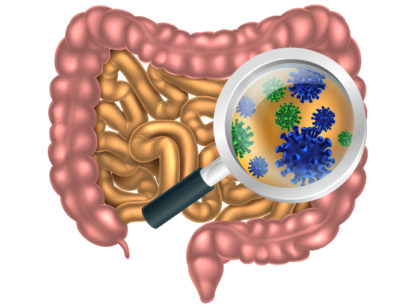The Fever Fallacy
Contrary to popular belief, fevers are GOOD and a positive indicator that your body has the strength to fight off pathogens. A fever is part of your body’s defense mechanism and actually kills off bacteria and viruses that can’t live in higher temperatures. Fevers up to 104ºF are benign and of short duration and have not been shown to cause permanent neurological damage. The main goal for decreasing a fever is to improve the comfort of the person with a fever.
Technically speaking, a fever is an oral temperature of 100.4ºF or above. In children under the age of 3 years, parents should monitor the behavior of their child, not the actual temperature. The degree of the fever doesn’t always correlate with the severity of the infection. I have seen 4 year olds in my clinic running up and down my hallway with fevers of 102-103ºF. Their immune system is reacting perfectly to fight off their bug. However, if the child is listless and blue looking, that is a much more serious sign and you need to seek urgent medical attention.
Many parents and care-givers are advised to reduce fevers with NSAIDs or acetaminophen (Tylenol) for the purpose of comfort. The best way to support a person with a fever is to keep them well hydrated with electrolyte water and well rested. A tepid Epsom salt bath will also temporarily reduce the fever and relax aching muscles. Again, let your body do what it’s built to do and fight off infections by mounting a fever.
A Strong Immune System Starts with the Gut
Maintaining digestive health is key to the health of your body. Your intestines make up 70% of your immune system called GALT- Gut associated lymphatic tissue. A healthy gut protects you from bacteria, viruses, parasites and absorbs vitamins and nutrients from your food. When it is not working properly, the result is constipation/diarrhea, allergies, stomach pain and bloating, and acid reflux. Basic ways to regulate your digestive function are:
- Probiotics are the good bugs found in your digestive tract. They enhance the immune system, prevent the overgrowth of yeast and fungus, and produce substances that can lower cholesterol.
- Test for food sensitivities/allergies–hidden food sensitivities can cause chronic low levels of inflammation in your intestines. Chronic inflammation decreases your ability to digest and absorb nutrients from your food, resulting in a disturbed gut and decreased immune strength.
- Spice up you life–Cook with plenty of fresh spices and herbs such as garlic, onions, cumin, rosemary, basil, etc. Kitchen spices and herbs have anti-microbial properties that can protect you from a cold and flu.
Create a Balanced Daily Routine
Your body is designed to function optimally by maintaining a homeostatic environment, i.e. perfect balance. One of the best things you can do is create a lifestyle of balance, including proper nutrition, exercise, sleep, and stress reduction.
You can support your immune system by incorporating these good habits.
- Get adequate exercise every day! Individuals who receive 40 minutes of moderate daily exercise cut down sick days by 50%.
- Sleep/adequate rest–A full 8 hours of rest every night allows your body to recover from the wear and tear of every day work and stress.
- Stress reduction–daily stress reduction either through prayer, meditation, exercise, etc. can help enhance your immune system and well being.
- Avoid sugary foods and beverages–1 tsp of sugar decreases our body’s immune system by 50% for the next 5-8 hours!
Dr. Sonja Fung is a Naturopathic Doctor in family practice at Live Well Clinic. Live Well Clinic is located on Washington and Hwy 111 in La Quinta at Point Happy Plaza. For more information you can visit www.livewellclinic.org or call 760-771-5970.
Resources: 1) Sullivan, Janice E., Farrar, Henry C. “Fever and Antipyretic Use in Children” PEDIATRICS Volume 127, Number 3, March 2011 pp. 580-587.; 2) Gaby, AR. Nutritional Medicine. Concord: Fritz Perlberg, 2011. 3) Parham, P. The Immune System. 2nd Ed. New York: Gardland Science, 2005; 4) Mills, S., Bone, K. Principles and Practice of Phytotherapy. New York: Churchill Livingstone, 2000.











































Comments (0)